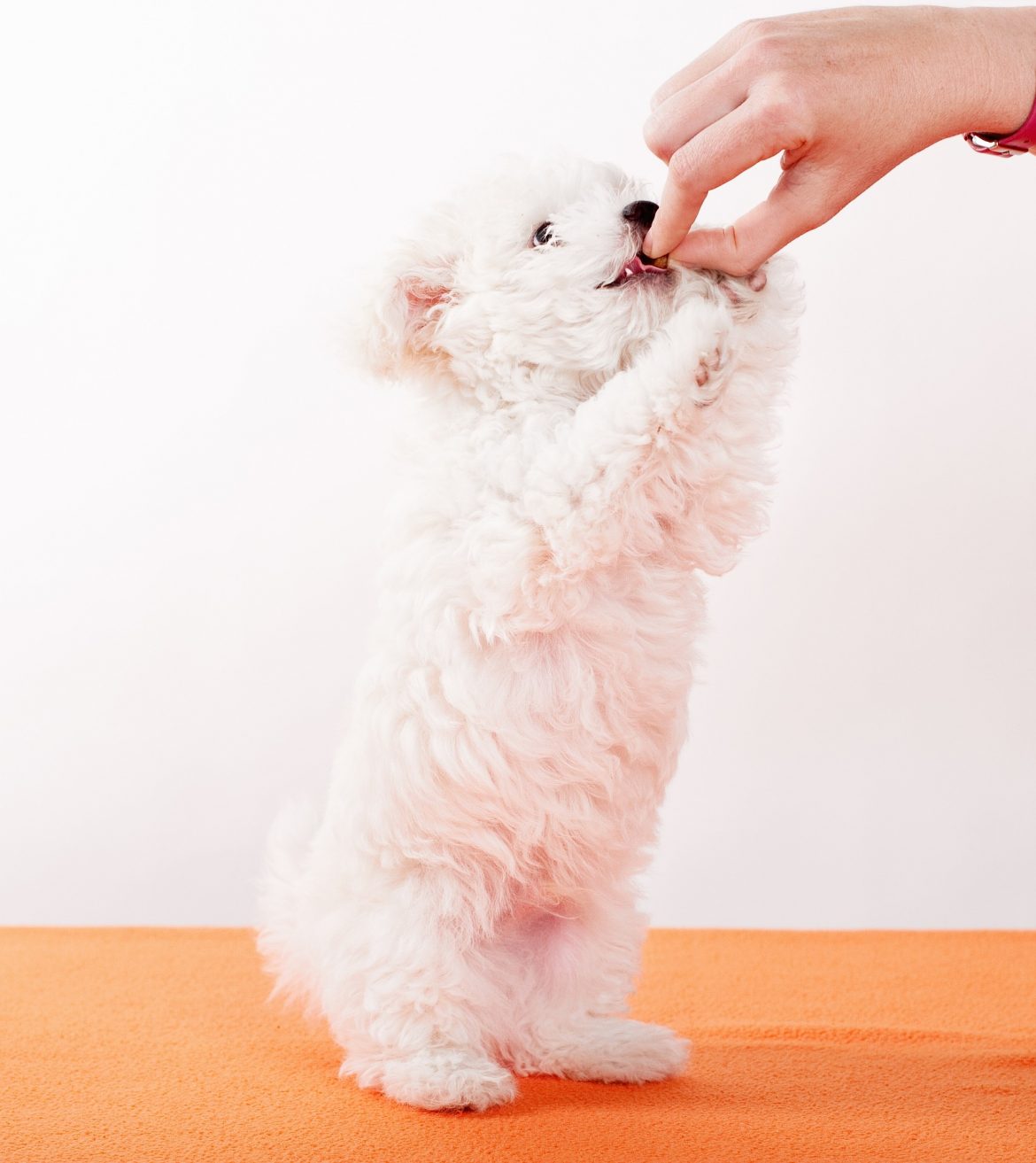One of the most common questions Dog Owners have is, “How much should I feed my dog?” We all want to know that we’re feeding our pup the perfect amount of chow to keep them healthy and happy.
But because each dog is unique, there is no one-size-fits-all approach to feeding our dogs. And, there are many different factors, from age to lifestyle to breed, that go into a dog’s dietary needs.
Luckily, you don’t have to be a scientist to find the perfect meal plan for your pup. In this article, we’ll cover some of the basic elements that determine how much a dog needs to eat. That way, you’ll have a personalised answer to the question “How much should I feed my dog?”

Why is the question of “How much should I feed my dog” so important?
Not too long ago, many Dog Owners would simply fill the food bowl and forget about it. Nowadays, though, we know that we should pay more attention to our pups’ diets. We’ve realised that not only is food quality important, but portion size is, too.
Why? It all comes down to your dog’s ancient relationship with food. Back when our dogs were roaming the world as wolves, eating whenever a meal presented itself was an obvious choice. Today, that means that our pups have a tendency to eat even when they’re full.
This is a problem even for very active doggos. They’re simply programmed to eat, regardless of how much energy they may burn off at the dog park.
Luckily, the solution is easy. Feed your dog specific meals instead of topping off their food bowl. Now, let’s talk about how to find the right amount of food per meal!
How much should I feed my dog as a puppy versus an adult?
Puppies and adult doggos have very different dietary needs.
Let’s start with the little ones. Because puppies are growing and learning, they need high quality food—and more of it than you might expect! But, overfeeding a puppy can lead to weight problems and a slew of related health concerns later down the line. So how do you find the sweet spot for puppies?
Many vets recommend feeding puppies based on their age. This will ensure that they’re getting the right amount of food for their developmental stage. Generally, puppies should be fed four small meals when they’re very young, three meals when they’re about 3 to 6 months old, and then two meals once they’ve reached 6 months.
For adult doggos there are a lot of other factors at play. So, let’s take a look at a few!
Does my dog’s breed have anything to do with their dietary needs?
Each dog breed has a unique genetic history which may affect their dietary needs.
A 2015 study, for instance, found that some dogs, such as Labradors and Basset Hounds, are at higher risk for obesity than other breeds like Vizslas or Dobermanns.
Exactly why some dogs are more prone to weight gain than others is complicated, but the latest research suggests that it has to do with a dog breed’s food motivation. For whatever reason, the puppers who were bred for herding and driving are less motivated by food than hounds and retrievers.
It’s important to research your specific doggo’s breed to determine how their background can affect their dietary needs.
How does lifestyle play a role in my dog’s diet?
Absolutely! Just like Olympic athletes rely on regimented diets for peak performance, your dog’s dietary needs are dependent on how active they are.
Now, we’re not talking about dogs who get a couple of walks per day or love a good romp around the dog park. This is considered to be an average amount of exercise for a doggo.
Dog Owners should really only up the feeding quantity for dogs who exercise heavily on a consistent basis. In other words, this applies to dogs who work, participate in agility competitions, or otherwise engage in high-energy activities.
On the other end of the spectrum, puppers who spend most of their days lounging on their cozy dog bed may require less food. For these low-active dogs, it’s a good idea to keep an eye on their weight and adjust their meals accordingly.
How much should I feed my dog if they haven’t been spayed or neutered?
Something interesting happens with dogs after they’ve gone through the spaying or neutering process. They seem to experience an increase in appetite but a decrease in energy.
For this reason, whether a dog has been desexed or not is an important consideration for the question, “How much should I feed my dog?”
Again, every dog is unique and may not react to spaying or neutering the same. You may find, for instance, that your pupper is just as energetic as ever. But, it’s much more common for desexed dogs to slow down a bit, and if that’s the case, they may require less food.
Does the type of food I feed my dog affect how much they should eat?
Yes, yes, yes! As we covered in our recent article, What’s the Best Meat for Dogs?, quality is key! A dog food with little nutritional value will mean that your pup has to eat more of it in order to reap the benefits of a healthy lifestyle. That’s bad for your budget and your dog.
When you feed your dog highly-nutritious, fresh foods, on the other hand, you can be sure that each meal packs the perfect dietary punch. Mad Paws Dinner Bowl meals are the ideal combo of biologically-appropriate ingredients and just-right portion sizes so that each meal gives them the exact amount of energy and nutrients they need.
One other consideration we’d like to mention here is doggie treats. In our blog, we often recommend training methods that rely on treats as rewards. That’s because, this sort of positive reinforcement method is highly effective and a wonderful way to bond with your dog! But, if you’re going to choose to train with a bag of treats in hand, it’s a good idea to adjust the daily dose of pet food to accommodate it.
How much should I feed my dog? Turn to the pros!
You might have noticed that this article didn’t mention specific measurements or calorie counts. That’s because finding a dog’s ideal food intake cannot be generalised! In order for all our pups to be as healthy as can be, we need to think of doggie diets on a dog-by-dog basis.
Luckily, you can use the Mad Paws Dinner Bowl meal planning tool to learn more about your dog’s dietary needs. Instead of asking yourself, “How much should I feed my dog?” you can be sure that your pup is getting the best food in the perfect quantity!

